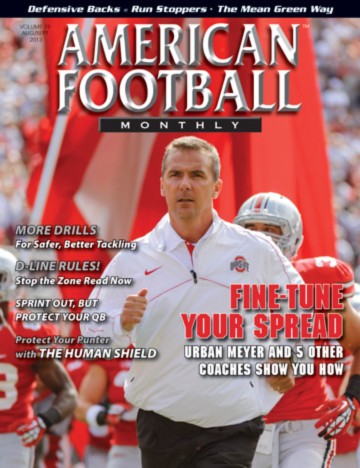Article CategoriesAFM Magazine
|
Developmental Tackling Part II: Hashmark-to-Boundary Drills and Pursuit Drills to improve overall tacklingby: Brent SteuerwaldRetired Head Coach Shenendehowa High School (NY) © More from this issue The safety considerations and progressive skills emphasized in part I of Developmental Tackling must be maintained and re-taught as you move from individual skill areas to group skills and game preparation. Nothing can impact your season more than great defensive play exemplified by great tackling skills, team pursuit and rallies to the ball. In film review, we always count the players who swarm to the ball carrier and address the responsibility of cutback and backside pursuit.
|
|
|||||||
| HOME |
MAGAZINE |
SUBSCRIBE | ONLINE COLUMNISTS | COACHING VIDEOS |
Copyright 2025, AmericanFootballMonthly.com
All Rights Reserved





